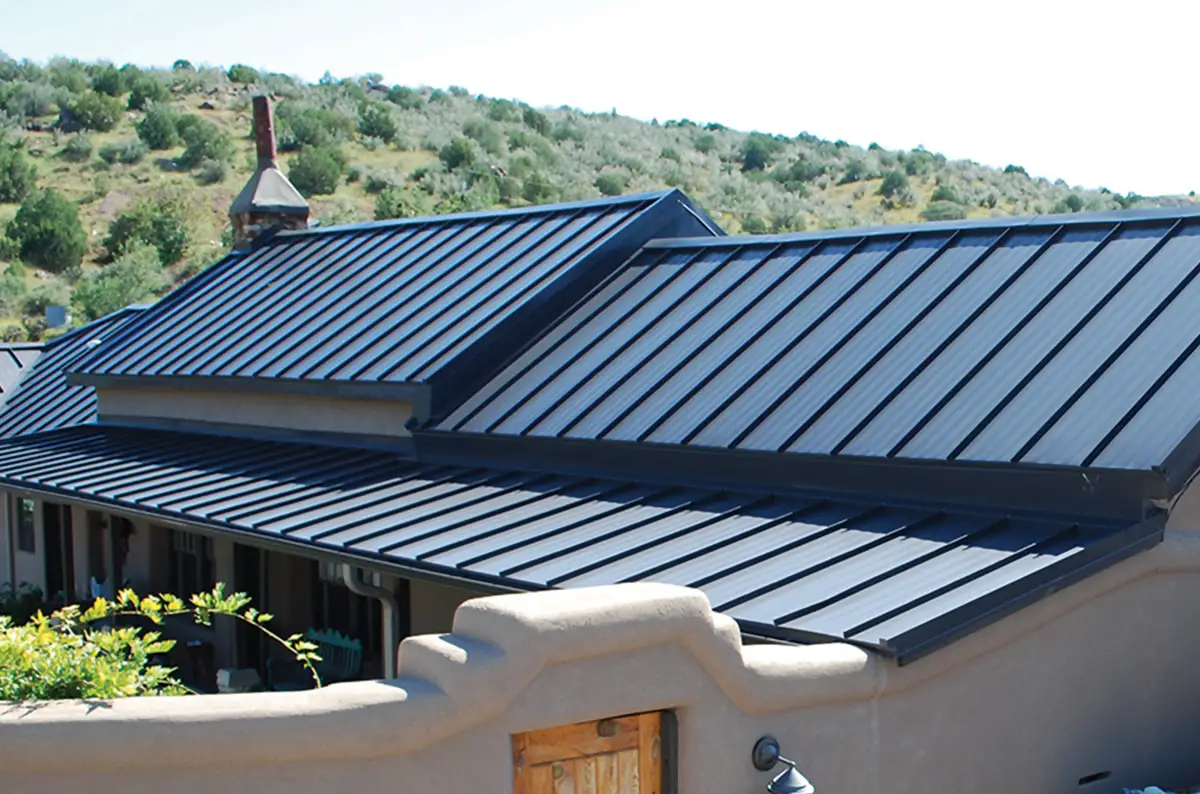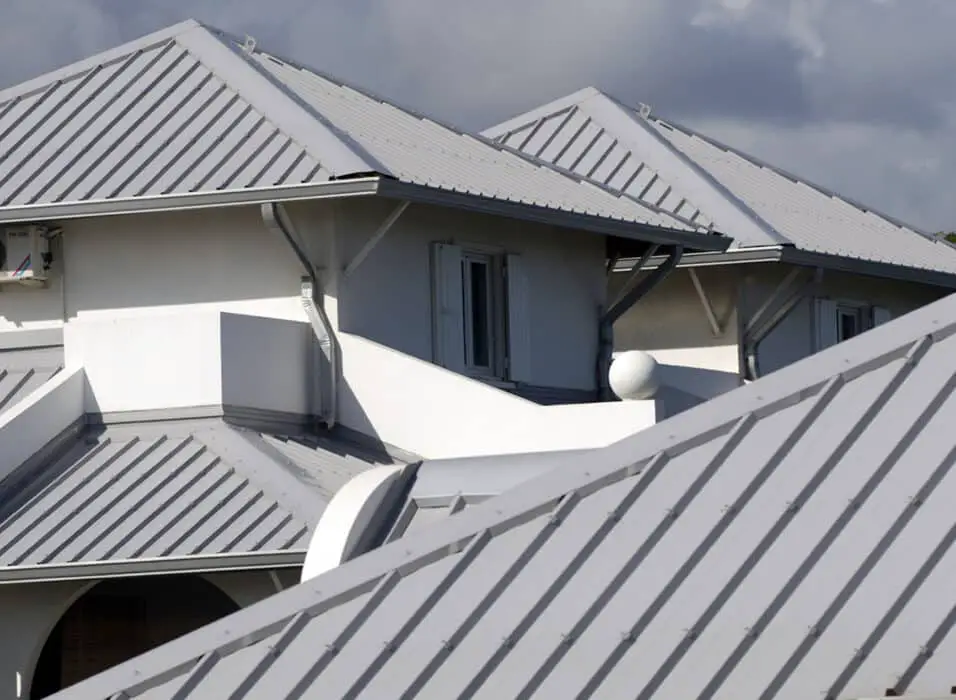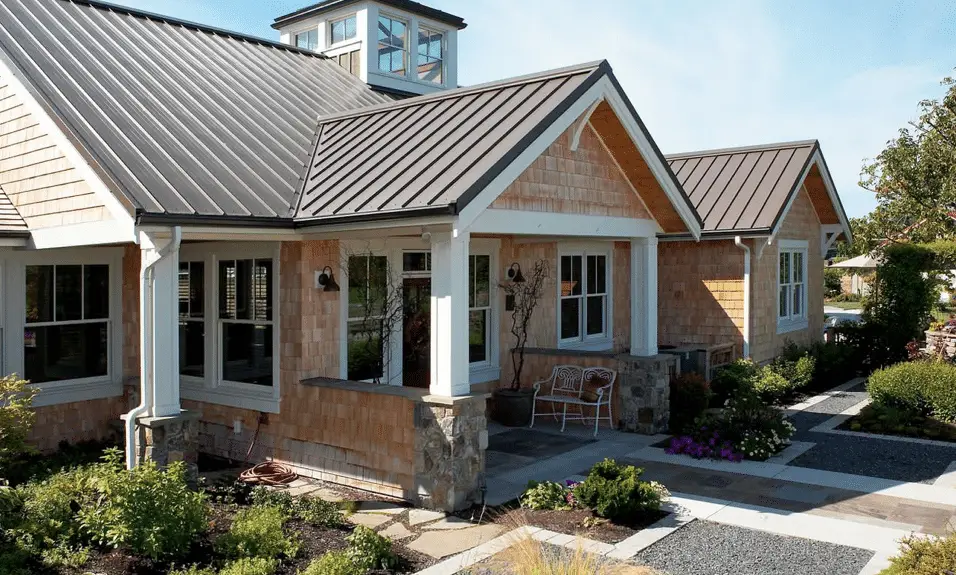What Is The Best Sealant For A Metal Roof
Introduction
What Is The Best Sealant For A Metal Roof: Metal roofs are a popular choice for homeowners and businesses alike due to their durability, longevity, and aesthetic appeal. However, to ensure the longevity and performance of a metal roof, it is crucial to use the right sealant. The right sealant not only protects the roof from leaks and corrosion but also enhances its overall performance and lifespan. With a wide range of sealants available in the market, choosing the best one for a metal roof can be a daunting task. In this article, we will explore the various factors to consider when selecting a sealant for a metal roof and highlight some of the best options available.
When it comes to selecting a sealant for a metal roof, it is essential to consider the specific requirements and challenges associated with metal roofing. Metal roofs are prone to expansion and contraction due to temperature fluctuations, which can lead to the development of cracks and leaks over time. Additionally, metal roofs are susceptible to corrosion, especially in areas with high humidity or exposure to harsh weather conditions. Therefore, the ideal sealant for a metal roof should be able to withstand these challenges and provide long-lasting protection.
In conclusion, selecting the best sealant for a metal roof is crucial to ensure its longevity, performance, and protection against leaks and corrosion. Considering factors such as compatibility with the roofing material, weather resistance, and flexibility is essential when making a decision. Silicone-based, acrylic-based, and polyurethane sealants are among the top choices for metal roofs due to their excellent properties. By choosing the right sealant, homeowners and businesses can enjoy a well-protected and long-lasting metal roof.
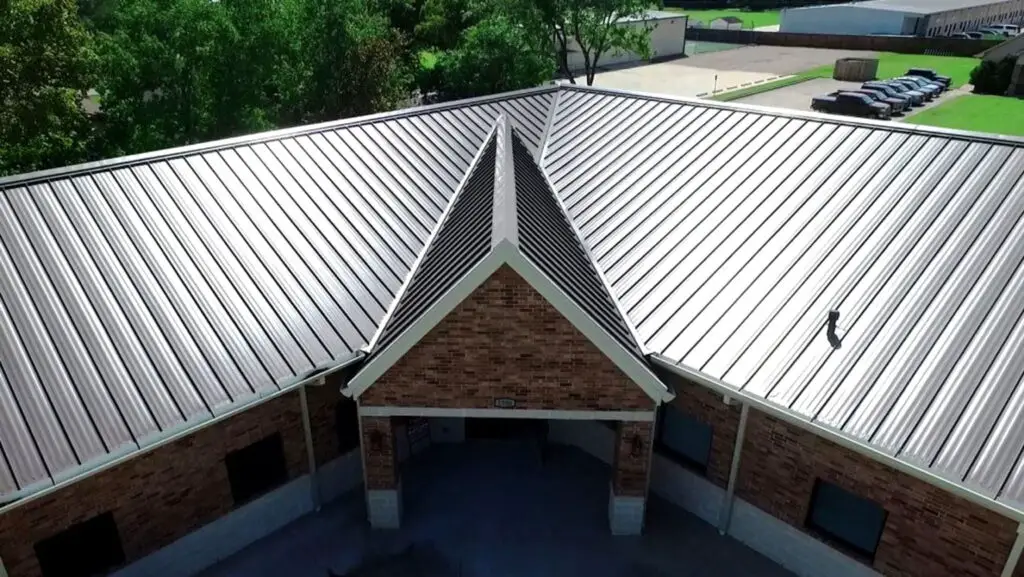
What is the best way to stop a metal roof from leaking?
In short, you have four options:
- Replace all screws and fasteners.
- Remove and replace the entire metal roof.
- Install a roof coating system over the existing metal roof.
- Install spray foam over the existing metal roof.
Introduction:
A metal roof is a durable and long-lasting option for homeowners. However, like any other roofing material, it is not immune to leaks. In this article, we will discuss the best ways to stop a metal roof from leaking.
Identify the Source of the Leak:
The first step in fixing a leaking metal roof is to identify the source of the leak. Leaks can occur due to various reasons, such as damaged flashing, loose screws, or improper installation. Inspect your roof carefully to locate the exact area where the water is entering.
Repair Damaged Flashing:
Flashing is a crucial component of a metal roof that helps to prevent water from seeping into the roof joints and causing leaks. Over time, flashing can become damaged or deteriorated, leading to water penetration. To stop a metal roof from leaking, inspect the flashing and replace any damaged sections. Use a pry bar to carefully remove the old flashing and install new flashing in its place.
Tighten Loose Screws:
Loose screws can also contribute to roof leaks. Inspect your roof for any loose screws and tighten them using a screwdriver or a drill. Be careful not to overtighten the screws, as this can damage the metal panels. Regularly checking and tightening loose screws can help prevent leaks and ensure the longevity of your metal roof.
Apply Sealant:
Applying a high-quality sealant to your metal roof can provide an additional layer of protection against leaks. Before applying the sealant, clean the roof surface thoroughly to remove any dirt, debris, or rust. Regularly inspect and reapply sealant as needed to maintain the integrity of your metal roof.
How do you seal gaps in a metal roof?
A metal roof is a durable and long-lasting option for homeowners. These gaps can lead to water leakage, energy loss, and even structural damage if not addressed promptly. Sealing gaps in a metal roof is essential to maintain its integrity and protect the underlying structure from potential harm.
Methods for sealing gaps:
There are several methods available for sealing gaps in a metal roof, depending on the size and location of the gaps. One common approach is to use sealants or caulking compounds specifically designed for metal roofs.
Before applying the sealant, it is crucial to clean the area around the gap thoroughly. Remove any dirt, debris, or loose paint using a wire brush or sandpaper. This ensures proper adhesion of the sealant and enhances its effectiveness.
If the gaps in the metal roof are larger or more significant, using metal patches or flashing can be a more suitable solution.
What is the best roof sealant?
#1 – Silicone Roof Sealants
Silicone roof sealants are the best all around roof sealants, as they provide both good water resistance and good UV reflectivity. It is waterproof, and it reflects up to 90% of UV rays. Silicone is also incredibly long lasting. When it comes to protecting your roof from leaks and damage, choosing the right sealant is crucial.
Factors to Consider:
Before selecting a roof sealant, it is important to assess the specific requirements of your roof. Factors such as the type of roof material, climate conditions, and the extent of damage or leaks should be taken into account. Additionally, consider the ease of application, longevity, and compatibility with other roofing materials. By evaluating these factors, you can narrow down your options and choose a sealant that will provide optimal protection.
Types of Roof Sealants:
There are various types of roof sealants available, each with its own advantages and applications. They are also highly flexible, making them suitable for roofs that experience frequent expansion and contraction. Acrylic sealants, on the other hand, are more affordable and easy to apply. They provide good protection against UV rays and are ideal for roofs with minor leaks or damage.
Elastomeric sealants are another popular choice, as they offer superior flexibility and can withstand a wide range of temperatures. They are particularly effective for roofs with significant movement or those located in areas prone to extreme weather. They are resistant to moisture and can withstand harsh weather conditions.
Which silicone is best for metal?
GE Metal Silicone 2® Sealant is permanently flexible and backed by a lifetime guarantee. It is a reliable and effective choice for sealing and protecting metal roofs.
Silicone is a versatile material that is widely used in various industries, including the metalworking industry. It offers excellent adhesion, flexibility, and resistance to extreme temperatures, making it an ideal choice for sealing and bonding applications in metal structures. However, not all silicone products are suitable for use with metal surfaces. In this article, we will explore the different types of silicone and determine which one is best for metal.
The Importance of Choosing the Right Silicone:
When it comes to working with metal, selecting the right silicone is crucial to ensure optimal performance and longevity. Metal surfaces can be challenging to bond due to their smooth and non-porous nature. Therefore, it is essential to choose a silicone product that is specifically formulated to adhere to metal surfaces effectively.
One of the key factors to consider when selecting silicone for metal is its adhesion properties. Silicone sealants or adhesives with high adhesion strength are capable of forming a strong bond with metal surfaces, ensuring long-lasting durability. Additionally, the silicone should also provide excellent resistance to environmental factors such as moisture, UV radiation, and temperature fluctuations, as these can affect the performance of the bond over time.
Different Types of Silicone for Metal:
There are several types of silicone products available in the market, each with its own unique properties and applications. When it comes to metal bonding, two common types of silicone are commonly used: acetoxy-cure silicone and neutral-cure silicone.
Acetoxy-cure silicone is a type of silicone that releases acetic acid during the curing process. It offers excellent adhesion to metal surfaces and is commonly used for sealing and bonding applications in metal fabrication, automotive, and construction industries. However, it is important to note that acetoxy-cure silicone may not be suitable for certain types of metals, such as copper or brass, as the acetic acid can cause corrosion.
What can I use to seal a leak in my roof?
- Best Sealants for Roof Leaks of 2022
- Dicor Self-Leveling Lap Sealant. This product comes with four caulking tubes of sealant.
- Liquid Rubber Waterproof Sealant.
- Flex Seal Liquid Rubber in a Can.
- Gorilla Waterproof Patch & Seal Tape.
- Flex Seal Spray Rubber Sealant Coating.
When it comes to dealing with a leak in your roof, finding the right solution is crucial to prevent further damage to your home. Whether you are facing a minor leak or a more significant issue, there are several options available to seal the leak and protect your roof from further water damage. In this article, we will explore some effective methods and materials that you can use to seal a leak in your roof.
Identifying the source of the leak:
Before you can effectively seal a leak in your roof, it is essential to identify the source of the problem. Leaks can occur due to various reasons, such as damaged shingles, cracked flashing, or clogged gutters. Inspect your roof carefully to determine the exact location of the leak. Look for any signs of water stains or dampness on the ceiling or walls inside your home, as these can indicate the source of the leak.
Using roofing cement:
Roofing cement, also known as mastic or asphalt plastic cement, is a popular choice for sealing leaks in roofs. It is a thick, sticky substance that can be applied to the damaged area using a trowel or putty knife. Roofing cement is effective in sealing small cracks and gaps in shingles, flashing, or vents. However, it is important to note that roofing cement is a temporary solution and may require reapplication over time.
Applying roof sealant:
Another option to seal a leak in your roof is to use roof sealant. Roof sealants are available in various forms, including liquid, tape, or spray. They are designed to create a waterproof barrier and provide long-lasting protection against leaks. Before applying the sealant, clean the area thoroughly and ensure it is dry. Follow the manufacturer’s instructions carefully to apply the sealant correctly. Roof sealants are suitable for sealing small to moderate-sized leaks and can be an effective solution for minor roof repairs.
Replacing damaged shingles or flashing:
When faced with a leak in your roof, it is crucial to take immediate action to prevent further damage. Identifying the source of the leak is the first step, followed by selecting the appropriate method to seal the leak. Whether you choose to use roofing cement, roof sealant, or replace damaged shingles or flashing, it is essential to follow the instructions carefully and ensure a proper seal. By addressing the leak promptly and effectively, you can protect your home from water damage and maintain the integrity of your roof.
Acrylic sealants are another popular choice for metal roofs. They are easy to apply and offer good adhesion to metal surfaces. Acrylic sealants are typically water-based, which means they are environmentally friendly and have low VOC emissions. However, they may not be as durable as silicone sealants and may require more frequent reapplication.
How do the various sealants differ in terms of durability and longevity?
When it comes to the durability and longevity of sealants for metal roofs, there are several factors that differentiate them. Firstly, the type of sealant used plays a significant role. Silicone sealants are known for their exceptional durability and longevity, as they can withstand extreme weather conditions, UV radiation, and temperature fluctuations without deteriorating. They offer excellent resistance to cracking, peeling, and fading, ensuring long-lasting protection for metal roofs.
On the other hand, acrylic sealants are also commonly used for metal roofs. While they may not be as durable as silicone sealants, they still provide decent longevity and can withstand moderate weather conditions. Acrylic sealants are known for their flexibility, which allows them to expand and contract with the metal roof as it expands and contracts due to temperature changes. This flexibility helps prevent cracks and leaks, enhancing the overall lifespan of the roof.
Another factor to consider is the application method. Some sealants require a primer to be applied before the sealant itself, which can affect the durability and longevity. It is important to follow the manufacturer’s instructions regarding the application process to ensure optimal performance and longevity of the sealant.
What factors should be considered when selecting a sealant for a metal roof?
When selecting a sealant for a metal roof, several factors should be taken into consideration to ensure the best performance and longevity of the roof. Firstly, it is important to consider the specific requirements of the metal roof, such as its type (steel, aluminum, etc.) and the environmental conditions it will be exposed to. Different metal roofs may have different surface characteristics and require sealants with specific adhesion properties.
Secondly, the durability and longevity of the sealant should be evaluated. Factors such as the sealant’s resistance to UV radiation, temperature fluctuations, and moisture are crucial in determining its performance over time.
Additionally, the application method and ease of installation should be considered. Some sealants may require specialized equipment or professional expertise for proper application, while others may be more user-friendly and suitable for DIY projects. It is important to choose a sealant that aligns with the available resources and expertise.
Are there any specific sealants recommended for different types of metal roofs (e.g., steel, aluminum)?
When it comes to selecting a sealant for different types of metal roofs, it is important to consider the specific requirements and characteristics of each metal. Steel and aluminum are two commonly used metals in roofing, and they have different properties that may affect the choice of sealant.
For steel roofs, it is recommended to use sealants that are specifically formulated for this type of metal. Steel roofs are prone to rust and corrosion, so the sealant should provide excellent protection against these elements. Look for sealants that have corrosion inhibitors and are designed to adhere well to steel surfaces. Additionally, it is important to choose a sealant that can withstand the expansion and contraction that occurs with temperature changes, as steel roofs can experience significant thermal movement.
On the other hand, aluminum roofs require sealants that are compatible with this lightweight metal. Aluminum is more resistant to corrosion compared to steel, but it is still important to choose a sealant that provides adequate protection. Look for sealants that are specifically labeled for use on aluminum roofs and have good adhesion to aluminum surfaces. It is also important to consider the flexibility of the sealant, as aluminum roofs can expand and contract with temperature changes.
Are there any specific sealants recommended for different types of metal roofs (e.g., steel, aluminum)?
When it comes to selecting a sealant for different types of metal roofs, it is important to consider the specific requirements and characteristics of each type of metal. Steel and aluminum are two commonly used metals for roofing, and they have different properties that may influence the choice of sealant.
For steel roofs, it is recommended to use a sealant that is specifically designed for this type of metal. Steel roofs are prone to rust and corrosion, so the sealant should provide excellent protection against these elements. Look for sealants that have corrosion inhibitors and are resistant to UV rays, as these factors can significantly impact the durability and longevity of the sealant on a steel roof.
For aluminum roofs, the selection of sealant should focus on compatibility with this metal and its unique characteristics. Aluminum roofs are lightweight and flexible, so the sealant should be able to accommodate the movement and expansion of the metal without cracking or peeling. Additionally, it is important to choose a sealant that is non-reactive with aluminum to avoid any chemical reactions that could damage the roof.
Overall, it is crucial to consult with roofing professionals or manufacturers to determine the most suitable sealant for your specific type of metal roof. They can provide valuable recommendations based on their expertise and experience, ensuring that you choose a sealant that offers optimal protection and longevity for your metal roof.
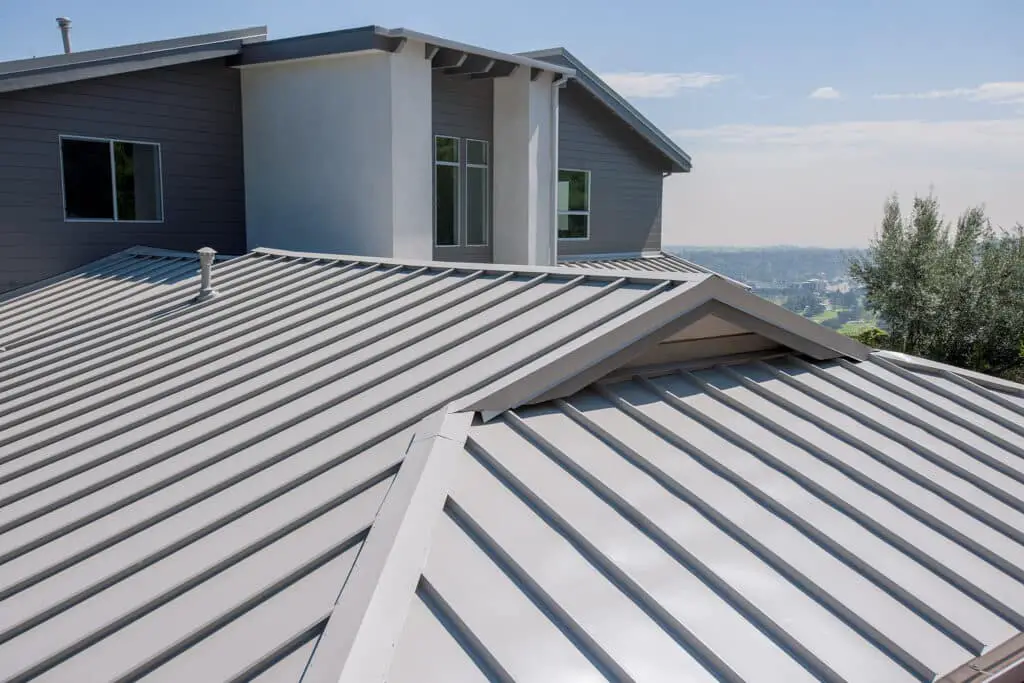
Conclusion
After conducting extensive research on the best sealant for a metal roof, it is clear that there is no one-size-fits-all answer to this question. The choice of sealant depends on various factors such as the type of metal roof, the climate conditions, and the specific requirements of the project. However, several sealants have emerged as top contenders in terms of their effectiveness and durability.
Lastly, but certainly not least, acrylic sealants are also commonly used for sealing metal roofs. Acrylic sealants offer good adhesion to metal surfaces and provide reliable protection against leaks and rust. They are easy to apply and typically dry quickly, allowing for faster project completion. However, acrylic sealants may not be as durable as silicone or polyurethane sealants, especially in areas with extreme weather conditions. Therefore, they are often recommended for less demanding applications or as a temporary solution.
Choosing the best sealant for a metal roof sealant requires careful consideration of various factors. While silicone-based sealants offer excellent adhesion and flexibility, polyurethane sealants provide exceptional durability and resistance to harsh conditions. Acrylic sealants, on the other hand, are a more affordable and convenient option for less demanding applications. Ultimately, it is crucial to assess the specific needs of the project and consult with professionals to determine the most suitable sealant for the metal roof in question. By selecting the right sealant, one can ensure the long-term protection and integrity of their metal roof.



